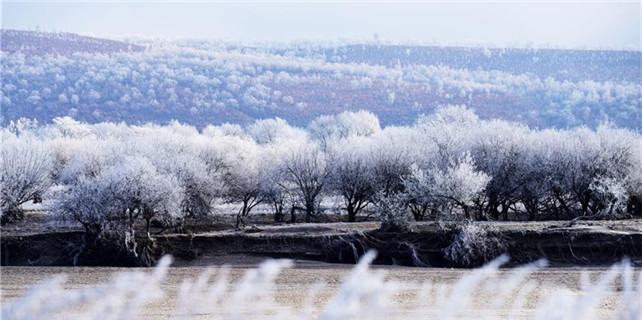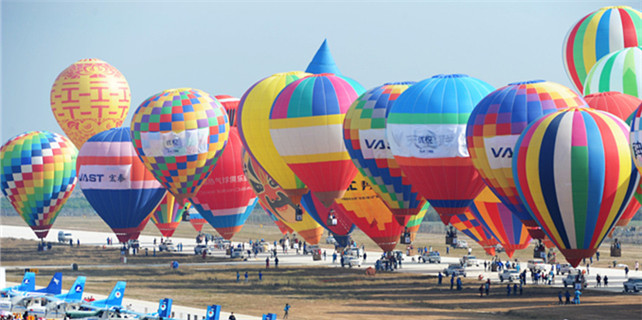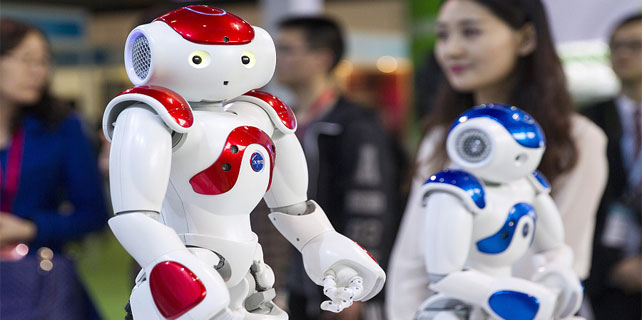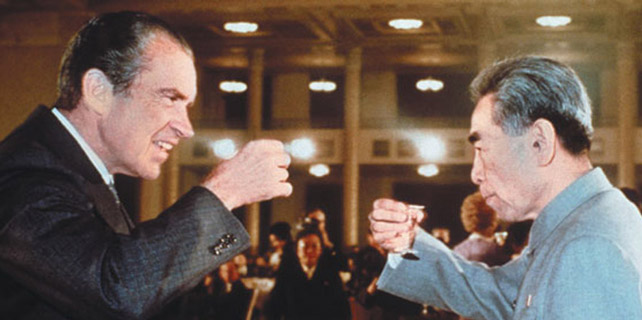China trade could be pioneer US beef producer's meat and drink
OMAHA, the United States — Though it is the home of US billionaire investor Warren Buffett, Omaha was little known to Chinese a few months ago.
But now this city in the midwestern Nebraska state is poised to become a household name in China since its Greater Omaha Packing company sent about 40 boxes of its products to China on June 14, days after the United States and China reached a deal to re-open Chinese markets for US beef as part of their 100-day action plan to boost bilateral economic cooperation.
That was the first export of US beef to China in more than 13 years. China banned US beef in December 2003 after the mad cow disease struck US cattle. Before the ban, the United States used to be China's top foreign supplier of beef.
Secret of being number one
"The secret is to be very lucky," chuckled Henry Davis, the third-generation chief executive officer of the nearly century-old Greater Omaha, in response to Xinhua's question how it shot past the "big four" in the United States - Tyson, Cargill, JBS and National Beef - and became the first to export beef to China after the hiatus.
The grey-haired CEO attributed the success to the hard work of the staff: "We would not have been the first company to get our beef into China if everybody in this plant, all 1,150, weren't doing their job properly."
When the company saw a possibility that China could resume the beef trade, everyone worked round the clock and made calls to the industry people to find out what they needed to do.
"It takes a lot of work," he emphasized. "We need to be compliant to all the regulations and standards of China. We need to prove ourselves... and to the US Department of Agriculture, to the inspection services of China."
Fortunately the company has rich experience in developing new markets. It was the first US company to ship beef to Japan when Tokyo re-admitted American meat packers.
"The fact that at that time we were already exporting to 68 countries (meant) we (had) met a lot of those criteria that the Chinese government wanted to be part of their import program," he added. "We export to more than twice as many countries as other beef packing companies."
Beef exports to China must come from cattle that are under 30 months, are born in the US, Canada or Mexico, and can be traced back to a US birth farm or first US port of entry. The meat must be free from residues of growth promotants, feed additives and other chemical compounds prohibited by Chinese law.
Testing occurs at the point of arrival. If a shipment were to include a prohibited substance, it would be rejected and returned to the United States or destroyed.
Innovation pays off
Greater Omaha was founded by Davis' grandfather, who got his start in the cattle business in 1920. Unlike many other large meatpackers, which have relocated outside Omaha's traditional stockyards districts into the rural Midwest, Greater Omaha has stayed where it was, said Davis, who joined the company in 1973.
With an estimated annual sales of $1.7 billion, Greater Omaha has been called a "small giant" among US beef producers by Forbes. Today the company slaughters 2,400 heads of cattle a day, and about one-fifth of its sales are exports to nearly 70 countries.
Self-funding, innovation, dedication to food safety and high-end products are factors that have helped Greater Omaha ride out the storm for decades, according to Davis. Also, the plant is "perfectly situated" in the "center of the highest quality cattle" in the United States.
The company has invested heavily in food safety equipment. A lot of those are proprietary. Greater Omaha has either developed them or is operating them in a special way.
According to executive vice president Angelo Fili, a butcher-turned businessman, Greater Omaha is the only major packer to sell individually cut fresh steaks directly to consumers, as opposed to frozen cuts.
The company guarantees a 30-day refrigerated shelf life, thanks to a new type of "skin-packed" air-tight packaging increasingly used in meat retailing. A QR code on the package lets customers see when it was packed and by which date they should eat or freeze it.
The packing plant uses a system of cameras and computers to grade beef, and takes its direct-to-consumer product from the top 20 percent of its prime cuts.
Davis, who has a computer science degree, wrote the software to process all the plant's data and is now heavily involved in the robotic control cold storage facility to be completed in six or seven months.
"It will add a lot to our ability to deliver individual boxes and track each box and load up 10 trucks sequentially," he said.
Boosting local economy
The China market for Great Omaha is "still in the development stage", but the second largest importer of beef in the world means a lot to the company as well as Nebraska and the US economy as a whole, given China's rapidly expanding middle class.
"We like the fact that it stimulates the economy. The cattle-consume-grain agriculture market is a very big part of the Midwest economy and it's good for them," he said.
There is a strong demand from China since the imports resumed and the company has hired a Mandarin-speaking analyst to help handle the overwhelming number of calls and email inquiries from China.
"China is the world's fastest-growing beef import market," Joe Schuele, vice president of communications at the US Meat Export Federation, told local media. "It has grown tenfold in the last five to six years."
China currently imports an estimated $2.6 billion of beef annually.
Beef exports will complement Nebraska's current success in the Chinese marketplace with soybeans, distillers' products and pork, Nebraska Governor Pete Ricketts said.
Nebraska's share of worldwide US beef exports has grown steadily over the past decade, going from less than 4 percent in 2005 to more than 18 percent in 2016, according to the Department of Agriculture.
"We raise what we consider very high quality product that we hopefully can put into the Chinese market," Bill Pellett, who runs a cattle feedlot about one hour's drive from Greater Omaha, told Xinhua. "It's something that we've been working on for 20 years or more to make it a better product."
Pellett added that it costs more to produce beef according to China's specifications but it is worthwhile doing so. He has sold cattle free of artificial hormones to Greater Omaha for years.
"I think it's good for all of us to understand each other and to share the resources that we have available. Each country ... has different resources, they need to trade to make the world a better place," Pellett said.
- Montana ranchers seek partnerships to send US beef into Chinese markets
- First seaborne shipment of US beef arrives in Shanghai after 14-year absence
- Those worrying about US beef imports have big hats, no cattle
- US beef producers welcome renewal of exports to China
- US beef proves big hit with Chinese shoppers


















